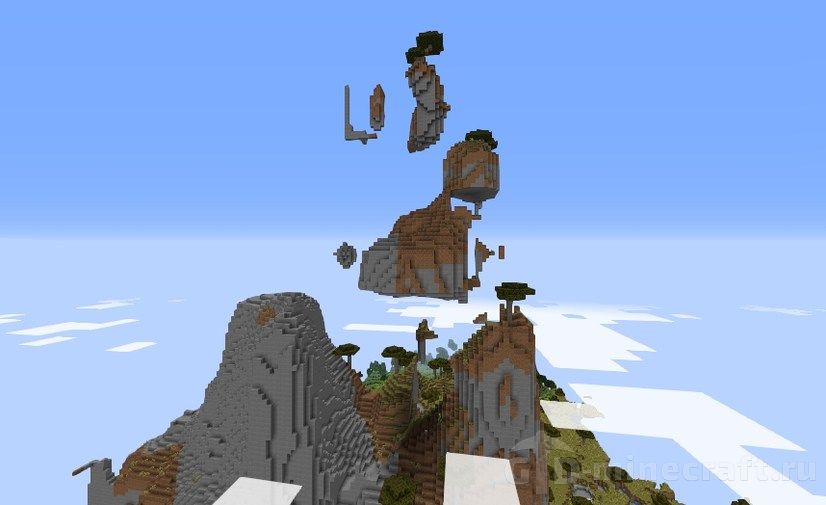For this week’s LO, I looked back on a game I used to play a lot as a kid: Minecraft created in 2011 by Mojang. It is interesting how despite its simple graphics, Minecraft encourages creativity and worldbuilding. This shows that games do not need the most sophisticated or detailed assets to still be fun and addicting. One of the main defining aspects of Minecraft is its terrains that are regenerated with every game and are virtually infinite, allowing the player to explore and build however they wish.
I was curious about how the terrains were generated, as they seemed to spawn randomly, sometimes even creating floating islands. Apparently, Minecraft terrains are generated based on Perline noise functions. When the game starts, it generates a Seed (a random 64-bit number) which is used to generate noise functions. So the game starts on a broad level by creating simple topographical maps, then goes into smaller random details like bushes, animals, lakes, etc. However, these random environments and objects still have a consistent logic and constraints they have to follow to make them believable terrains. This random generation allows for a different world each time, giving the player new ideas and possibilities to define their own gameplay.

![[OLD SEMESTER] 15-104 • Introduction to Computing for Creative Practice](https://courses.ideate.cmu.edu/15-104/f2021/wp-content/uploads/2023/09/stop-banner.png)